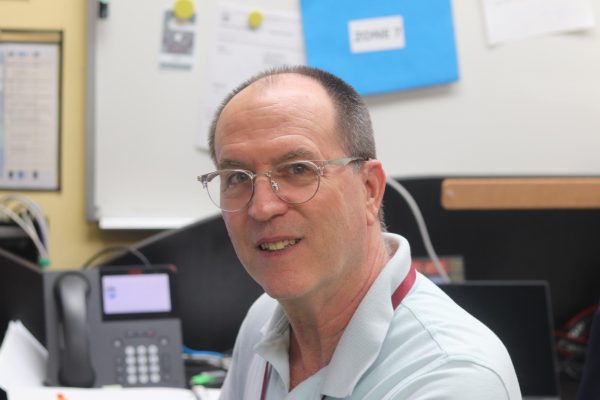Rise in antisemitism in the last year has instilled fear among the Jewish population
Tribune News Service
People from all over Miami-Date County attended the Interfaith Rally Against Antisemitism at the Holocaust Memorial, in Miami Beach, on June 3, 2021. Photo courtesy of Pedro Portal/Tribune News Service.
December 15, 2022
Paintball attacks while frolicking in a backyard. Extremist demonstrations during a torchlit march. Vandalizations of Jewish schools and community centers. Online radicalization. A number of hate-fueled incidents have targeted the Jewish community in both private and public settings, reignited by recent antisemitic sentiment in the media.
Beyond headlines of antisemitic surges, the global issue has been persistent throughout history, with the most significant event being the Holocaust when 6 million Jews were murdered by the Nazi regime during World War II.
However, the radicalism witnessed over 75 years ago has not died down. According to the Anti-Defamation League, the leading global anti-hate organization, incidents against Jews in the United States reached an all-time high in 2021 “with a total of 2,717 incidents of assault, harassment and vandalism tracked.”
“I always say that history is not exclusive to the past; we continue to see the language of the 1930s supporting Nazism and supporting views against Jewish people today,” Holocaust History teacher Darren Levine said.
Antisemitism did not begin with the Nazis but existed for millennia prior to the Holocaust. In a June 11, 2021 statement on the American Psychological Association website, the former president of the APA explained that the normalization of stigmatizations of antisemitic attitudes not only internalizes harmful messages but desensitizes offenders to violence.
Considering his reputation as a dominant cultural figure of the 21st century, rapper Kanye West’s antisemitic statements have sparked ongoing controversy. In early October, he vowed to go “death con 3 on JEWISH PEOPLE” and insinuated that Jewish people “toyed with” him and “tried to black ball anyone who opposes [their] agenda” on his Twitter account. Although the tweet was removed for violating company policies, West’s media presence persists and continues to espouse dangerous rhetoric concerning Jewish intimidation and extremist ideology.
“Antisemitism is something I believe should be strictly prohibited everywhere. Someone with influence [like Kanye] should not be speaking of this matter,” senior Riley Tromer said. “I identify as a Jew, but I don’t consistently participate in all Jewish activities, so I don’t feel it impacts me to the extent it does others.”
The persecution of Jews can be traced to decide, the assertion that Jews “bear eternal responsibility for the death of Jesus Christ,” as stated by the American Jewish Committee’s “Translate Hate Glossary” on their website. While many churches have repudiated this assertion, antisemites continue to use it to justify their anti-Jewish sentiment to this day.
Moreover, the frequency in which hostility towards Jewish people can be seen in current society has resulted in dangerous psychological, physical and social consequences. Kelly’s research found that hate crimes induce fear and anxiety among victims and community members, instigating feelings of anger, depression and insecurity. The trauma likely reinforced by recent antisemitic acts parallels the cruelty of the Holocaust, raising concerns about how the historical event is often downplayed or misinterpreted.
“In my view, our biggest concerns are one, a lack of education, and two, apathy. For many Jews, it can often feel like many others don’t care about antisemitism,” Chairman of the Board for the Florida Holocaust Museum Michael Igel said. “If you care about one form of racism, you should care about all forms of racism. That’s what antisemitism is. It’s racism.”
The ADL reports an average of more than seven antisemitic incidents per day and a 34% increase from 2020 to 2021 in the U.S., with the highest instances in New York. Microaggressions against American Jews are only one-way antisemitism is perpetrated on a daily basis; this includes assault, harassment, vandalism and invalidation. Prevailing stereotypes of Jews further ignite a constant state of uneasiness within the population.
“[Antisemitism] makes me feel unsafe wherever I go. I’ve had to hide my necklaces when going on trips and that’s such a small thing,” sophomore Courtney Solinksy said. “Being Jewish is a part of who I am, and it hurts when people could hate me because of that.”
White supremacist groups or extremists are responsible for the majority of antisemitic propaganda distribution, pushing an increase in references to Israel or Zionism as well as fomentation of anti-Israel and antisemitic beliefs. From the 2018 attack at the Pittsburgh Tree of Life Synagogue, where 11 congregants were killed and six others were injured, to the swastika graffiti on numerous public buildings across the country, antisemitism remains one of the longest-standing forms of prejudice in the nation.
Local occurrences of antisemitism have also been noted in South Florida. On Oct. 30, racist and antisemitic messages were spray-painted on a speed limit sign and an electrical box in a Weston Hills neighborhood for the second time in less than a month. Additionally, a children’s playground in the area was defaced by swastikas and derogatory terms.
“I feel that it is important to be aware of things such as antisemitic acts in your community as it can affect you personally,” junior Emma Kramer said. “Personally, I don’t think it limits who I am because I’m proud of [my religion], and I won’t let this stop me from being who I truly am.”
Antisemitism has appeared in Parkland as well. Swastikas, known as a symbol of hatred and a component of the Nazi flag, were found at Westglades Middle School, located next to Marjory Stoneman Douglas High School. On May 2, the emblem was seen inside a bathroom stall in the middle school; this occurred again on May 11 at a lunch table.
However, many Jewish students at MSD have little-to-no recollection of antisemitism in Parkland; this may be attributed to the large Jewish demographic found in the city, which may influence the frequency in which antisemitic acts are committed.
“I honestly haven’t had antisemitism impact me in any way. I am blessed that I live in an area where people are accepting of Jewish people,” senior Brooke Merfogel said. “I feel horrible for the Jews that are experiencing antisemitism; it’s scary that the world hasn’t overcome its hate since the Holocaust occurred and that we haven’t made much progress.”
Prejudice against Jewish people encompasses a distinct history. Subjected to misunderstandings and negative characterizations, the ADL’s “Antisemitism Uncovered” feature proclaims that “Jews often have found themselves wrongfully scapegoated, reviled, persecuted, expelled and murdered.” Citing myths and conspiracy theories imposed against Jews, the ADL insists that the global community adopts a greater understanding and involvement in combating antisemitism.
MSD offers a Holocaust elective taught by Levine and Elizabeth Ziolkowski to discuss and explore the historical events of the genocide and its long-term impact on the world. The course is meant to increase awareness of antisemitism and comprehension of Jewish history through its split curriculum, utilizing documentaries, films and literature to illustrate how the Jewish people were portrayed to the public.
“I don’t know if the reality of what antisemitic comments mean have registered with every student, especially those that haven’t been the target of hate or discrimination before,” Ziolkowski said. “The real reason why I teach it is oftentimes, it’s a subject that a lot of people are curious about and they get tastes of it throughout their elementary and middle school career. People shy away from learning about the Holocaust because they know they have a morbid sense of curiosity and have to look at that horror in the face. I think teaching about it is using that curiosity for good, to remember that there are people behind the stories we are hearing.”
Discussion of antisemitism has evolved over the last century, transforming into a form of discrimination beyond geographical constraints and changing political environments. Often referred to as the “oldest hatred,” the rise and fall of antisemitic hate groups, grievances from high-profile figures and visualization of microaggressions have persisted. Despite the long history of antisemitism, the work conducted by various institutions and organizations across the nation work towards bringing peace to the Jewish community.
To address the long-standing issue of antisemitism, the ADL offers various ways to eliminate the age-old hate. By monitoring antisemitic incidents both online and off, advocating for policy solutions and teaching about the dangers of antisemitism in the classroom, the current generation can work together towards reducing, and eventually eliminating, hate crimes indefinitely.
This story was originally published in the December 2022 Eagle Eye print edition.

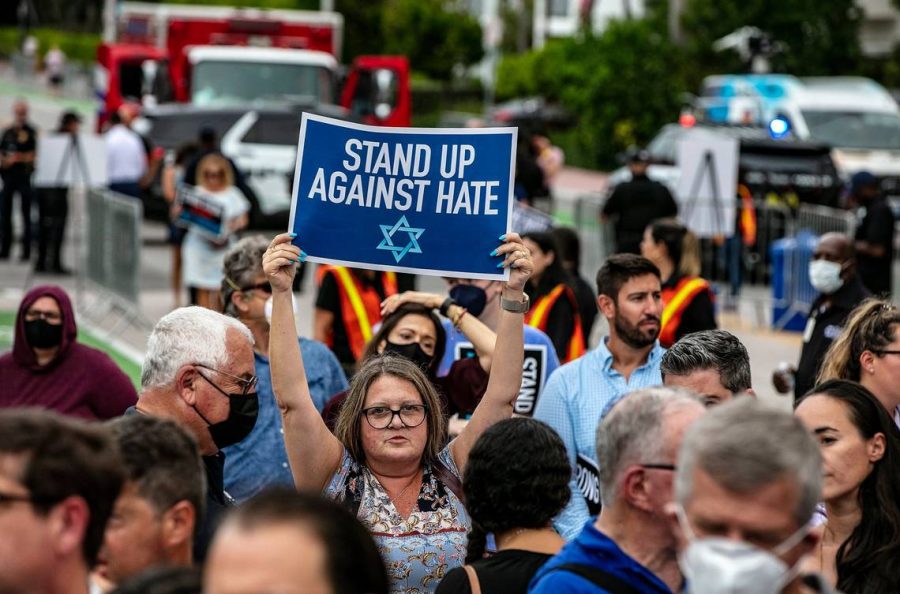
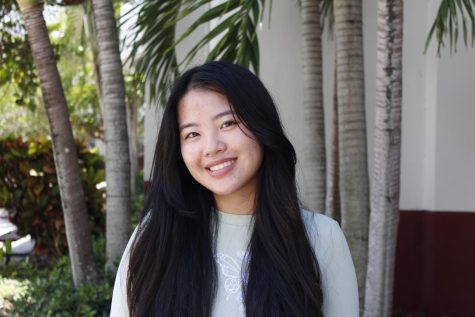
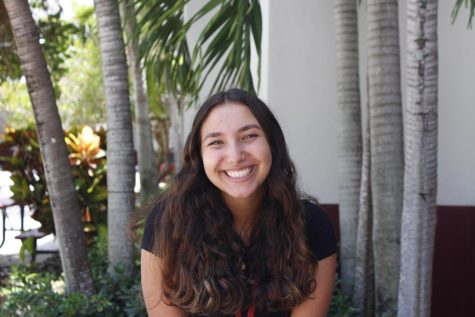

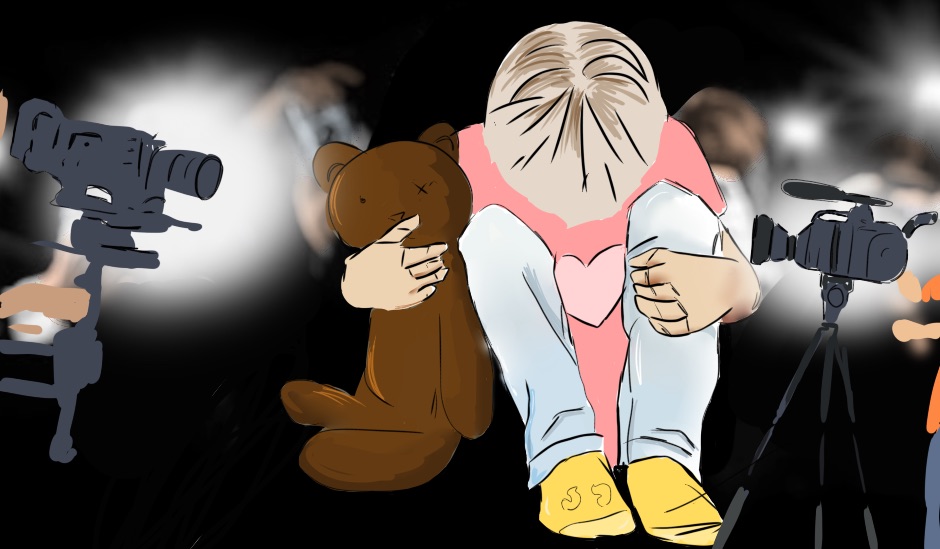
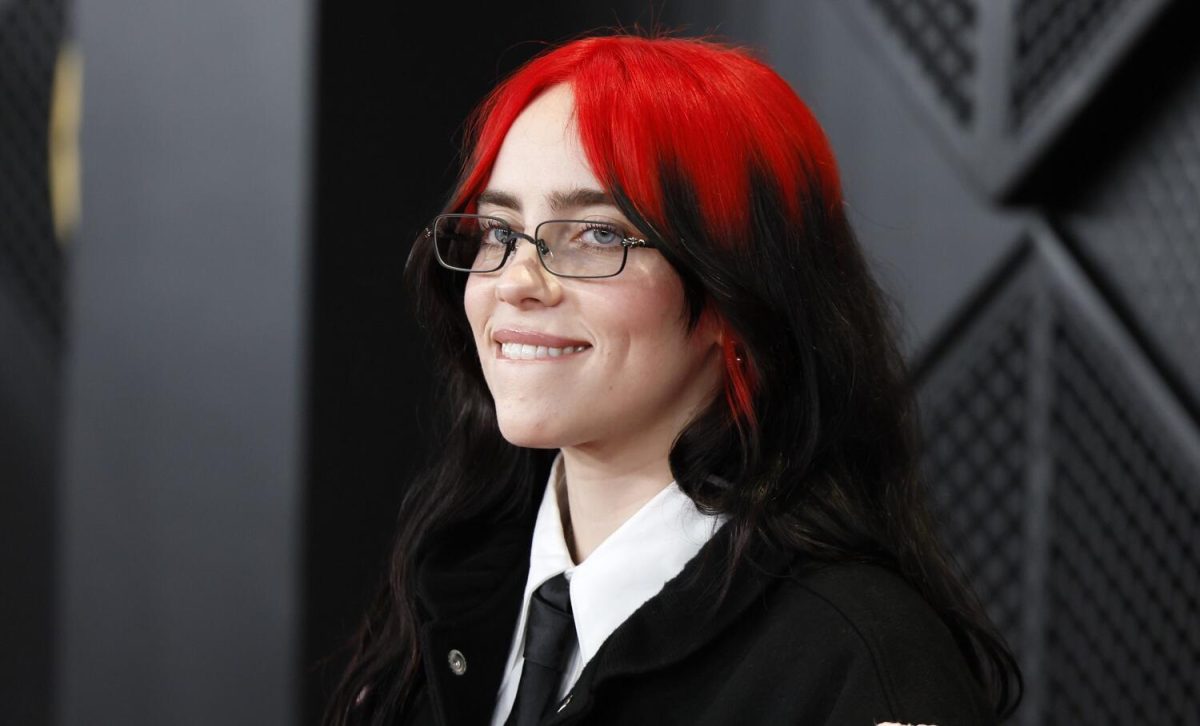
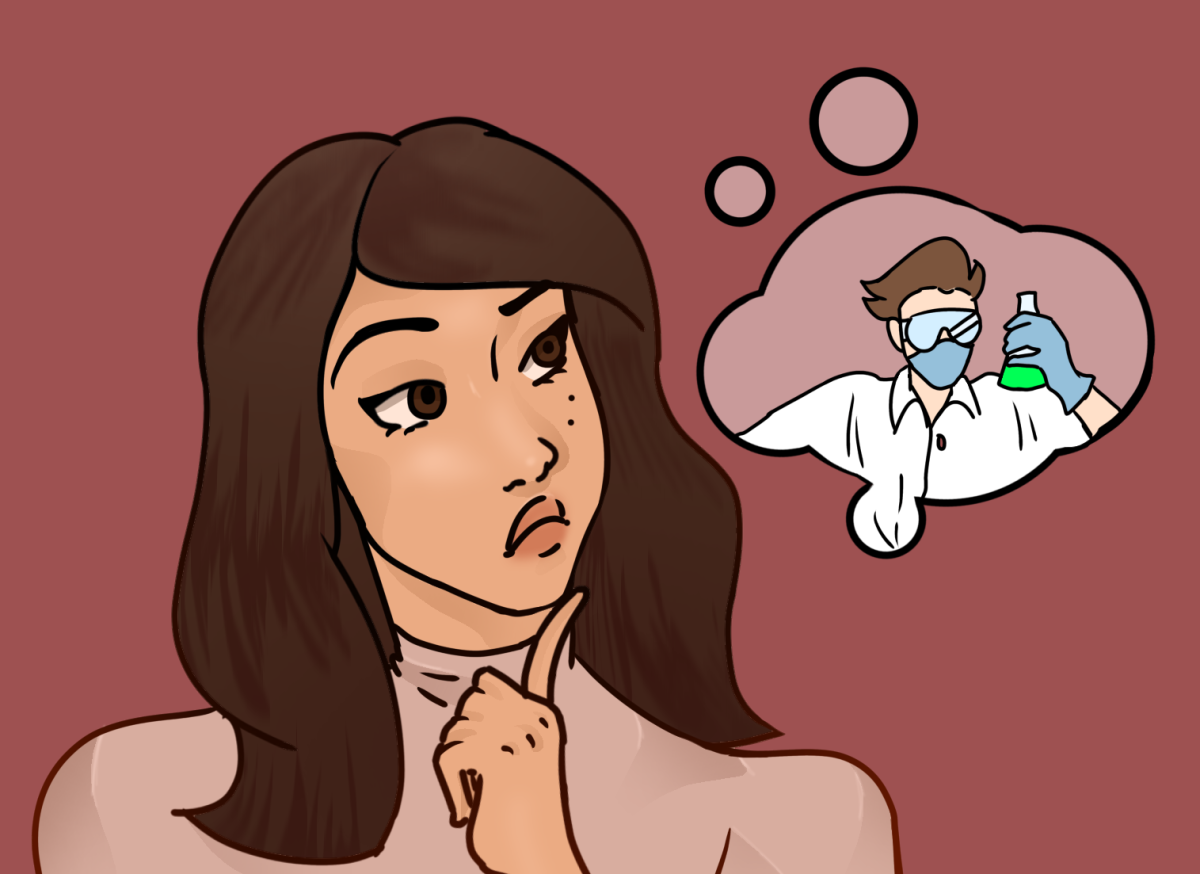






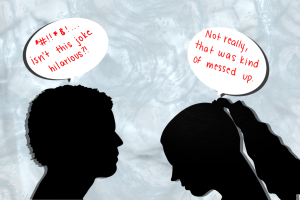
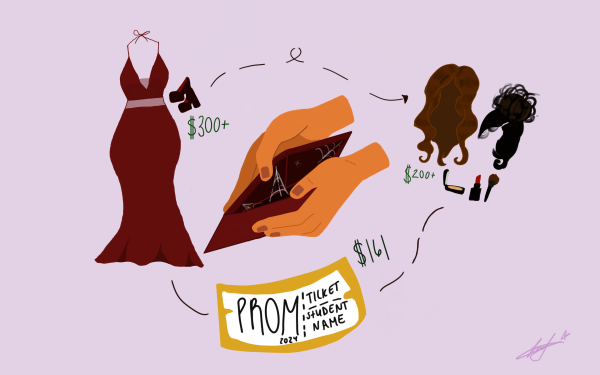




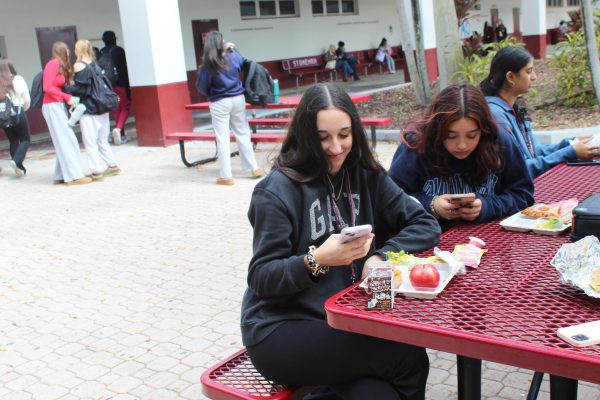
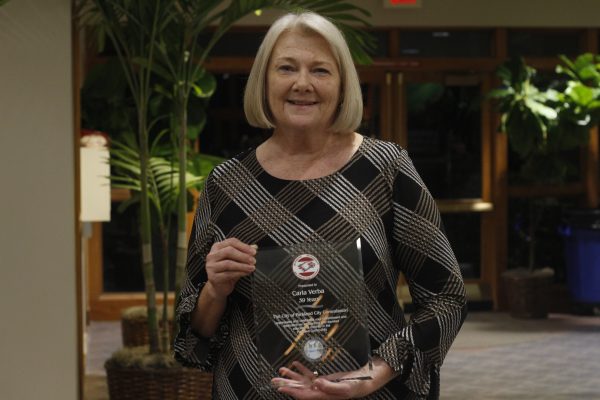

![(left to right) Seniors Stephanie Bilsky and Gracyn Haynes sport the DECA symbol, a triangle, at their first career fair, hosted on Dec. 6, 2023. The career fair had 12 business for students to explore and ask questions about. What we wanted to do is just take what weve learned [in DECA] and expand it to those students who arent enrolled in this class and dont have access and then just kind of take it to the community and allow students to discover their future as well, Haynes said.](https://eagleeye.news/wp-content/uploads/2024/01/9n9MEiC72JCfrptYKrZhoKhKscuboBiEju33GYeA-600x400.jpg)
